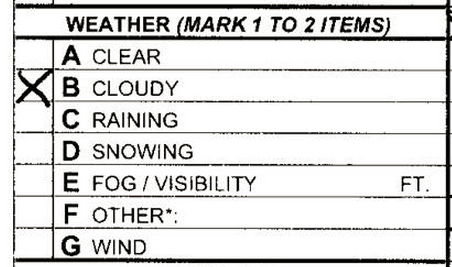A couple of weeks ago a friend was left crossed while bicycling in Campbell, CA. The driver of a Volvo station wagon made a left turn directly into the path of the cyclist, who was traveling at 20 MPH when he hit the car. That’s fast for a bike, but well below the typical 40 MPH car speed.
The cyclist obtained the accident report to discover police assigned fault to the driver for violating CVC 21801, but did not cite the driver. CVC 21801 says the driver making a left turn “shall yield the right-of-way to all vehicles approaching from the opposite direction.”

Why did this driver get away with it? The sun was in her eyes! If you can’t see where you’re going, it’s obviously safe to pilot your death machine across a street into a driveway.

Funny thing is that this “sun in my eyes” happened on a cloudy day.

Last year, the Santa Clara County Attorney’s office declined to charge Luis Felipe Hau with a crime after Hau nearly killed a 12 year old boy on a bike in Palo Alto. Hau allegedly was speeding his Nissan Quest minivan down a bicycle lane with methamphetamine in his system when he ran over the poor kid, permanently disabling him. But that was okay because — and this is no lie — the sun was in his eyes. Said Assistant DA Susan Hendrickson of Hau’s case: “We could not find a single case where similar driving was found to be ‘reckless.’”
In 2009, an unnamed driver traveling 35 MPH plowed across a marked crosswalk and killed Joe Molinara in Pittsburg, CA. The Contra Costa County Attorney failed to prosecute because the sun was in the driver’s eyes. In those rare cases when homicidal drivers do make it to trial, the “sun in my eyes” is a common defense.
Happily, we sometimes do things a little differently in Santa Cruz County. After two children were hit in a marked crosswalk in unincorporated Live Oak, CA, the driver tried the “sun in her eyes” excuse. The local CHP office, however, explained to the news media, “It’s the driver’s responsibility to make sure they can safely drive without any obstruction. Don’t just drive blind into the sun. If you can’t see, the speed limit is zero.”
Since you’re wondering about my friend and his bike:
- The rider suffered a sprained wrist.
- The six month old bike is trashed.
- The rider completely smashed out a window on the Volvo.
- The driver has no doubt been traumatized by this horrific experience.
- I can’t claim credit for the title of this post. One of my friend’s Facebook friends left it as a comment.
where in campbell, if i may ask?
“If you can’t see, the speed limit is zero.”
It’s a difficult situation for everyone. I drive very slowly when the sun is painfully low and ahead of me, but worry about drivers behind me that might have a different vantage if their car is higher/lower and might not realize why I’m crawling so slowly. It’s similar when driving in extremely torrential rain where visibility is so low that you want to stop, but would likely get rear-ended and cause a pile-up. That doesn’t mean I don’t think these drivers are to blame, but I don’t think it’s as easy as just stopping in the road either.
While cycling, if the sun was low, I took alternate routes. After a few days of realizing that my commute time was when the sun was in a bad spot, I’d just plan my departure to be 10 minutes earlier / later to avoid that issue.
If you ever want to get away with murder, run the person over with a car, and put a bicycle beside them. No criminality suspected!
If you don’t want to stop in the roadway, then you pull over and wait. I don’t drive often, usually going somewhere in the Sierra for the weekend. When I drive back to the Bay Area, it’s usually Sunday evening. I time a dinner stop for the 20 minutes or so when the sun is at its worst. It’s a simple decision that reflects the immense responsibility that driving entails.
There are on-line sun direction calculators if you know the date, time, and location of the incident. They overlay onto maps so you can clearly see if the sun was a factor.
If it was reported cloudy and the sun was pointed another direction, then I say sue the city for fraud and false reporting. A lawsuit is the only thing they will understand.
Below is the process that would need to be completed before a lawsuit. You already know what the PD will rule on the complaint though, regardless of the evidence.
How to make a Citizen’s Commendation, Inquiry or Complaint
An inquiry, complaint or commendation can be made in person at:
Campbell Police Department
70 North First Street
Campbell, CA 95008
Via email at CampbellPolice@CityofCampbell.com
Form:
http://www.ci.campbell.ca.us/DocumentCenter/View/1488
I see nothing wrong – the law says “Shall yield the right of way to all vehicles…” In California, a bicycle is not a vehicle so the biggest fear for a motorist is scratching his car when he impacts the cyclist.